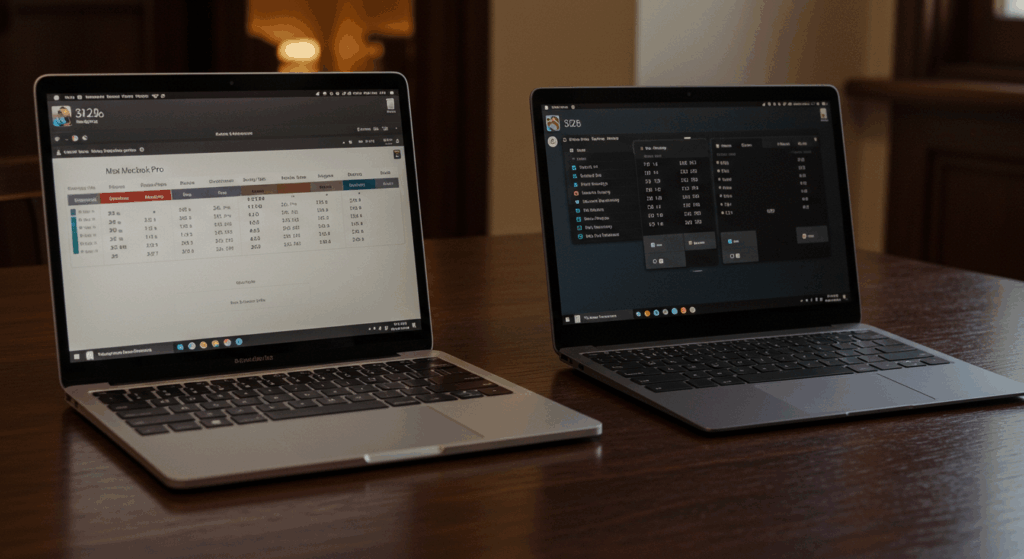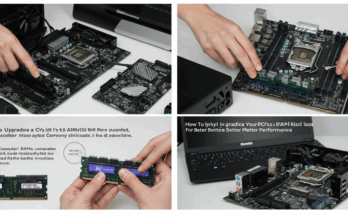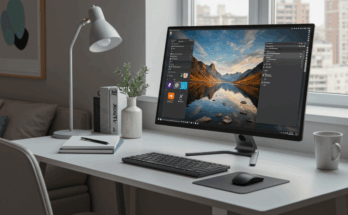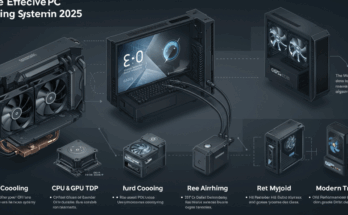In the ever-evolving world of laptops, the battle between Apple’s MacBook Pro and Windows-based ultrabooks remains a focal point for tech enthusiasts, professionals, and casual users alike. As we dive into 2025, both platforms have pushed the boundaries of performance, design, and user experience, making the choice between them more nuanced than ever. This blog post explores the key differences, strengths, and weaknesses of the MacBook Pro and Windows ultrabooks, helping you decide which is the best fit for your needs in 2025.
Design and Build Quality
MacBook Pro: The Gold Standard in Premium Design
Apple has long been synonymous with sleek, minimalist design, and the 2025 MacBook Pro lineup continues this tradition. Available in 14-inch and 16-inch variants, the MacBook Pro boasts a unibody aluminum chassis that is both lightweight and exceptionally sturdy. The 2025 models introduce a new sky-blue color option alongside the classic silver and space gray, adding a touch of flair. The Retina display, now with a nano-texture matte option, minimizes glare, making it ideal for developers and creatives working in varied lighting conditions.
The MacBook Pro’s keyboard remains a standout, with its tactile, chiclet-style keys offering a comfortable typing experience. The haptic trackpad is smooth and responsive, and the inclusion of MagSafe charging ensures a secure, user-friendly power connection. However, the port selection is limited to three Thunderbolt 4 USB-C ports, an HDMI port, an SD card slot, and a headphone jack, which may require dongles for some users.
Windows Ultrabooks: Variety and Versatility
Windows ultrabooks, produced by manufacturers like Dell, HP, ASUS, and Lenovo, offer a broader range of designs to suit different preferences. For instance, the ASUS Zenbook S 16 is remarkably thin at 13mm and weighs just 3.31 lbs, competing directly with the MacBook Pro’s portability. The Dell 16 Plus 2-in-1 introduces a convertible form factor with a stylus, catering to users who value flexibility. Meanwhile, the Lenovo ThinkPad X1 Carbon Gen 13 Aura Edition emphasizes durability and a premium typing experience for business professionals.
Windows ultrabooks often provide more port options, such as USB-A, HDMI, and even user-replaceable slots in models like the Framework 13, which enhances repairability and customization. Displays vary widely, with options like OLED panels on the ASUS Zenbook 14 OLED or mini-LED on the Dell 16 Plus, offering vibrant colors and high refresh rates. However, build quality can be inconsistent across brands, with some models not matching the MacBook Pro’s premium feel.
Verdict: The MacBook Pro wins for its consistent, high-end build quality and minimalist aesthetic. Windows ultrabooks counter with greater variety, including touchscreens and convertible designs, appealing to users who prioritize flexibility.
Performance: Powering Through 2025
MacBook Pro: Apple Silicon Dominance
The 2025 MacBook Pro lineup is powered by Apple’s M4 series chips (M4, M4 Pro, and M4 Max), which deliver exceptional performance and energy efficiency. The M4 Pro, for instance, is a powerhouse for creative professionals, excelling in video editing, 3D rendering, and coding. In benchmarks, the M4 MacBook Pro outperforms many Windows ultrabooks in tasks optimized for macOS, such as Final Cut Pro and Logic Pro. Its fanless design in the base M4 model ensures silent operation, though the M4 Pro and Max use active cooling for sustained performance under heavy workloads.
The M4 MacBook Pro starts with 16GB of unified memory, sufficient for multitasking and light editing, with options to upgrade to 128GB for professionals handling large datasets or 4K video. Storage options range from 256GB to 8TB, though Apple’s SSD upgrades remain pricey. The integration of macOS Sequoia enhances performance with AI-driven features and seamless cross-device functionality, such as Universal Control and Continuity, making it a favorite for those entrenched in the Apple ecosystem.
Windows Ultrabooks: Diverse Hardware Options
Windows ultrabooks in 2025 leverage a variety of processors, including Intel’s Core Ultra Series 2, AMD’s Ryzen AI 9, and Qualcomm’s Snapdragon X Elite. The ASUS Zenbook S 16, with its Intel Lunar Lake chip, offers strong integrated GPU performance, even surpassing some portable gaming PCs. The Lenovo Yoga Pro 9 16, equipped with an AMD Ryzen processor and Nvidia RTX graphics, is a compelling alternative for users needing discrete GPUs for gaming or specialized software.
Windows ultrabooks shine in their flexibility, with configurations catering to specific needs. For example, the Dell 16 Plus 2-in-1 matches the MacBook Pro in raw performance for some tasks, while the Microsoft Surface Laptop 7, with its Snapdragon X Elite chip, achieves class-leading battery life of nearly 20 hours. However, performance consistency varies across brands, and some Windows laptops struggle with thermal management, leading to throttling during intensive tasks.
Verdict: The MacBook Pro’s M4 chips offer superior efficiency and performance for macOS-optimized workflows, but Windows ultrabooks provide more hardware choices, including powerful GPUs for gaming and specialized applications.

Battery Life: Endurance for the Long Haul
MacBook Pro: The Efficiency Champion
Apple’s M4 MacBook Pro models continue to set the standard for battery life, with the 13-inch model lasting up to 20 hours and the 16-inch model averaging 15–18 hours under light use. The fanless M4 MacBook Air, a close cousin, achieves similar longevity, making Apple’s laptops ideal for mobile professionals. The efficient M-series chips and macOS optimizations ensure consistent performance without draining the battery, even during standby.
Windows Ultrabooks: Closing the Gap
Windows ultrabooks have made significant strides in battery life, particularly with ARM-based chips like the Snapdragon X Elite. The Microsoft Surface Laptop 7, for instance, rivals the MacBook Pro with nearly 20 hours of runtime. Models like the ASUS Zenbook 14 OLED and Lenovo ThinkPad X9 15 Aura Edition offer 8–15 hours, depending on usage, but some Intel-based ultrabooks, like the Dell 16 Plus, may dip to 6–8 hours under heavy workloads or at full display brightness.
Verdict: The MacBook Pro leads with consistent, long-lasting battery life across its lineup. Windows ultrabooks, especially ARM-based models, are catching up but vary by brand and configuration.
Software and Ecosystem
MacBook Pro: The Apple Ecosystem Advantage
macOS Sequoia, powering the 2025 MacBook Pro, is refined and user-friendly, with deep integration for iPhone and iPad users. Features like iMessage, FaceTime, and iCloud sync seamlessly, while Universal Control allows effortless control of multiple Apple devices with a single keyboard and trackpad. However, macOS has limitations for gaming and certain professional software, requiring workarounds like emulation for Windows-specific applications.
Windows Ultrabooks: Flexibility and Compatibility
Windows 12, expected in 2025, brings enhanced AI integration, improved multitasking, and robust compatibility with a wide range of software, from gaming titles to enterprise applications. Windows ultrabooks support a broader array of peripherals and offer greater customization, making them ideal for users who need specific software or hardware configurations. However, Windows can feel less polished than macOS, with occasional bloatware and a less cohesive ecosystem for non-Microsoft devices.
Verdict: The MacBook Pro excels for Apple ecosystem users seeking a seamless, polished experience. Windows ultrabooks win for software compatibility and hardware flexibility.
Price and Value
MacBook Pro: Premium Pricing, Long-Term Value
The 2025 MacBook Pro starts at $1,599 for the 14-inch M4 model, with the 16-inch M4 Max reaching $3,499. While expensive, MacBooks retain strong resale value and often outlast Windows laptops due to their build quality and software updates. However, upgrades like additional RAM or storage significantly increase costs, pushing buyers toward external solutions.
Windows Ultrabooks: Budget-Friendly Options
Windows ultrabooks span a wide price range, from the $899 Framework 13 to the $1,500+ Lenovo ThinkPad X1 Carbon. Models like the ASUS Zenbook S 16 offer high-end features at a lower price than the MacBook Pro, and sales can further reduce costs. The ability to upgrade components in some models, like the Framework 13, enhances long-term value.
Verdict: Windows ultrabooks offer better value for budget-conscious buyers and those needing specific configurations. The MacBook Pro justifies its premium for those prioritizing longevity and ecosystem integration.
Who Should Choose What?
- Choose the MacBook Pro if: You’re invested in the Apple ecosystem, prioritize battery life, build quality, and a seamless macOS experience, or work in creative fields with software like Final Cut Pro. It’s ideal for students, developers, and professionals who value portability and silence.
- Choose a Windows Ultrabook if: You need flexibility, gaming capabilities, or specific software compatibility. Models like the ASUS Zenbook S 16 or Dell 16 Plus suit professionals needing touchscreens, convertible designs, or powerful GPUs, while budget options cater to cost-conscious buyers.
Conclusion
In 2025, the MacBook Pro remains the gold standard for premium laptops, with its M4 chips, exceptional battery life, and polished macOS experience. Windows ultrabooks, however, offer unmatched variety, from the convertible Dell 16 Plus to the repairable Framework 13, catering to diverse needs and budgets. Your choice depends on whether you value Apple’s ecosystem and consistency or Windows’ flexibility and customization. Both platforms are stronger than ever, ensuring there’s a perfect laptop for everyone in this 2025 showdown.



